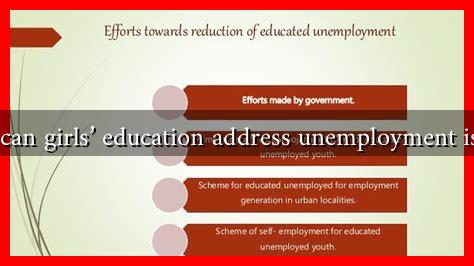-
Table of Contents
How Can Girls’ Education Address Unemployment Issues?
Education is a powerful tool that can transform lives and communities. In many parts of the world, girls face significant barriers to education, which in turn contributes to high rates of unemployment. By addressing these barriers and promoting girls’ education, we can tackle unemployment issues more effectively. This article explores the relationship between girls’ education and unemployment, highlighting the benefits of investing in girls’ education and providing examples and statistics to support these claims.
The Link Between Education and Employment
Education is directly correlated with employment opportunities. According to the World Bank, each additional year of schooling can increase a person’s income by up to 10%. For girls, this correlation is even more pronounced. Educated women are more likely to enter the workforce, earn higher wages, and contribute to economic growth. However, millions of girls worldwide are still denied this opportunity due to various factors, including poverty, cultural norms, and lack of access to quality education.
Barriers to Girls’ Education
Understanding the barriers that prevent girls from receiving an education is crucial in addressing unemployment issues. Some of the most common barriers include:
- Poverty: Families in low-income communities often prioritize boys’ education over girls’, believing that investing in a girl’s education is less beneficial.
- Cultural Norms: In many cultures, traditional gender roles dictate that girls should focus on household duties rather than pursuing education.
- Safety Concerns: In some regions, girls face violence or harassment when traveling to school, deterring them from attending.
- Lack of Facilities: Inadequate sanitation facilities in schools can discourage girls from attending, especially during menstruation.
The Economic Benefits of Educating Girls
Investing in girls’ education yields significant economic benefits, which can help reduce unemployment rates. Here are some key advantages:
- Increased Workforce Participation: Educated women are more likely to join the labor force, contributing to economic growth and reducing unemployment.
- Higher Earnings: Women with secondary education earn 20% more than those without, which can lead to improved family incomes and economic stability.
- Entrepreneurship: Educated women are more likely to start their own businesses, creating jobs and stimulating local economies.
- Intergenerational Impact: Educated mothers are more likely to prioritize their children’s education, creating a cycle of empowerment and economic improvement.
Case Studies and Success Stories
Several countries have successfully implemented programs aimed at improving girls’ education, leading to positive economic outcomes:
- Bangladesh: The Female Secondary School Stipend Project has significantly increased girls’ enrollment in secondary schools, resulting in higher employment rates for women in the country.
- Rwanda: Post-genocide, Rwanda focused on gender equality in education. Today, women make up over 50% of the workforce, contributing to the country’s rapid economic growth.
- India: The Beti Bachao Beti Padhao scheme aims to promote girls’ education and has led to increased enrollment rates, particularly in rural areas.
Conclusion
Girls’ education is not just a fundamental human right; it is a critical factor in addressing unemployment issues globally. By investing in girls’ education, we can unlock their potential, leading to increased workforce participation, higher earnings, and economic growth. The barriers to girls’ education must be dismantled through targeted policies and community engagement. As we have seen from various case studies, the benefits of educating girls extend beyond individual success; they contribute to the overall prosperity of communities and nations. To learn more about the importance of girls’ education, visit UNICEF’s Girls’ Education page.

